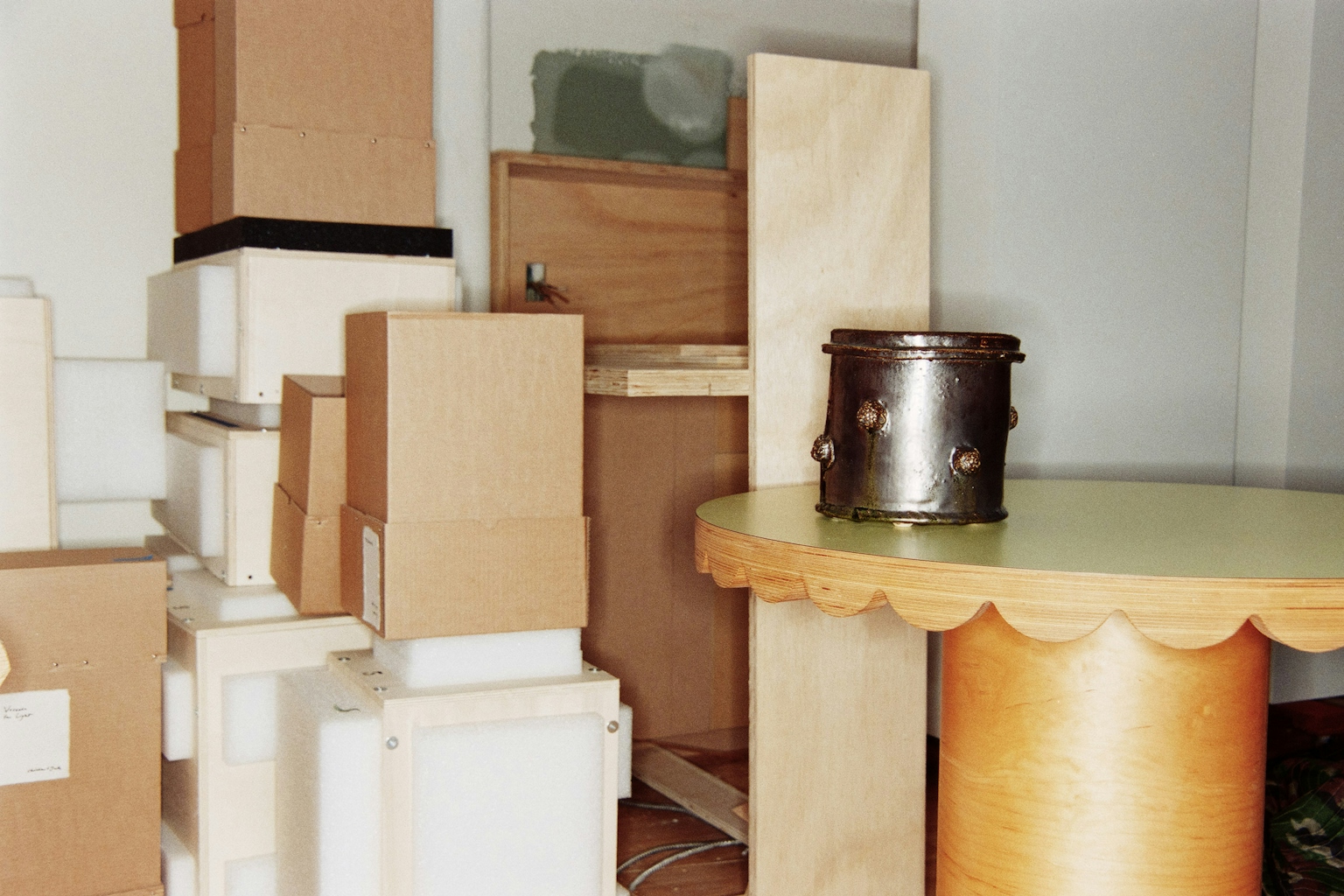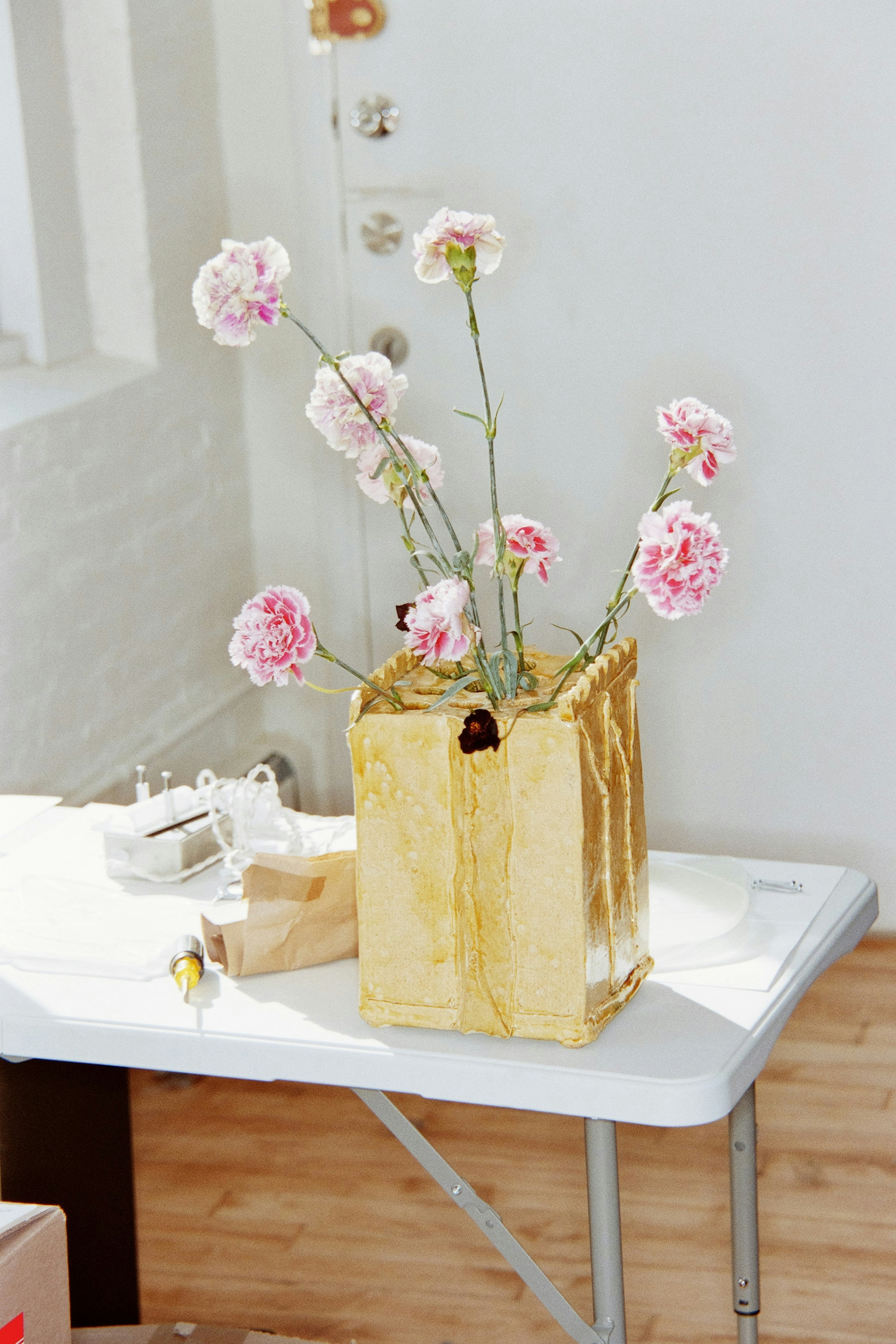
EB: In your words, what do you do?
JM: That’s changed pretty drastically in the past few years. When people ask me that, I usually say that I make things for people. The word artist comes up, the word designer comes up, the word fabricator comes up, but I think I just make stuff. I've always enjoyed making things.
EB: How are you doing? Where are you right now?
JM: Currently, I'm in Philadelphia on a couch that I just bought at an auction that I've had deep regrets about. But sitting on it now, it's actually very comfortable so I feel better about the purchase. How am I doing? I'm good, busy. I'm at home right now. I live across the street from my studio. So I can go back and forth.
EB: How has your education informed your practice today?
JM: My education is still present every day. Ceramics is a kind of material that you never really master. I feel like it’s always about problem solving. So I'm always thinking back to foundational things.
One of the most transformational things that happened to me early on in my education was when I enrolled in art school at Sheridan College, just outside of Toronto, to learn illustration. I was walking through the campus going from one class to the next and there was this whole wing of the school devoted to craft. I would walk through this long hallway and to the left there's a furniture studio with cool benches. And down the hall there's the glass studio with music blasting out of it and people running around. And then at the end of the hall there was the ceramic studio.
The experience of seeing these people making objects and using them–drinking coffee out of their mugs and sitting on the handmade benches–was transformational for me. Before this, my view of handmade things was that they were precious and not so useful. It also seemed like a rich kind of experience, not only for the people making things, but also as it related to the community and atmosphere in the studios. I felt like there was a generosity that I had not felt before.
EB: It sounds like a kind of utopian memory, everyone learning how to build their own worlds.
JM: It felt a lot like that. It wasn't like that every day, but it really changed my orientation going forward.
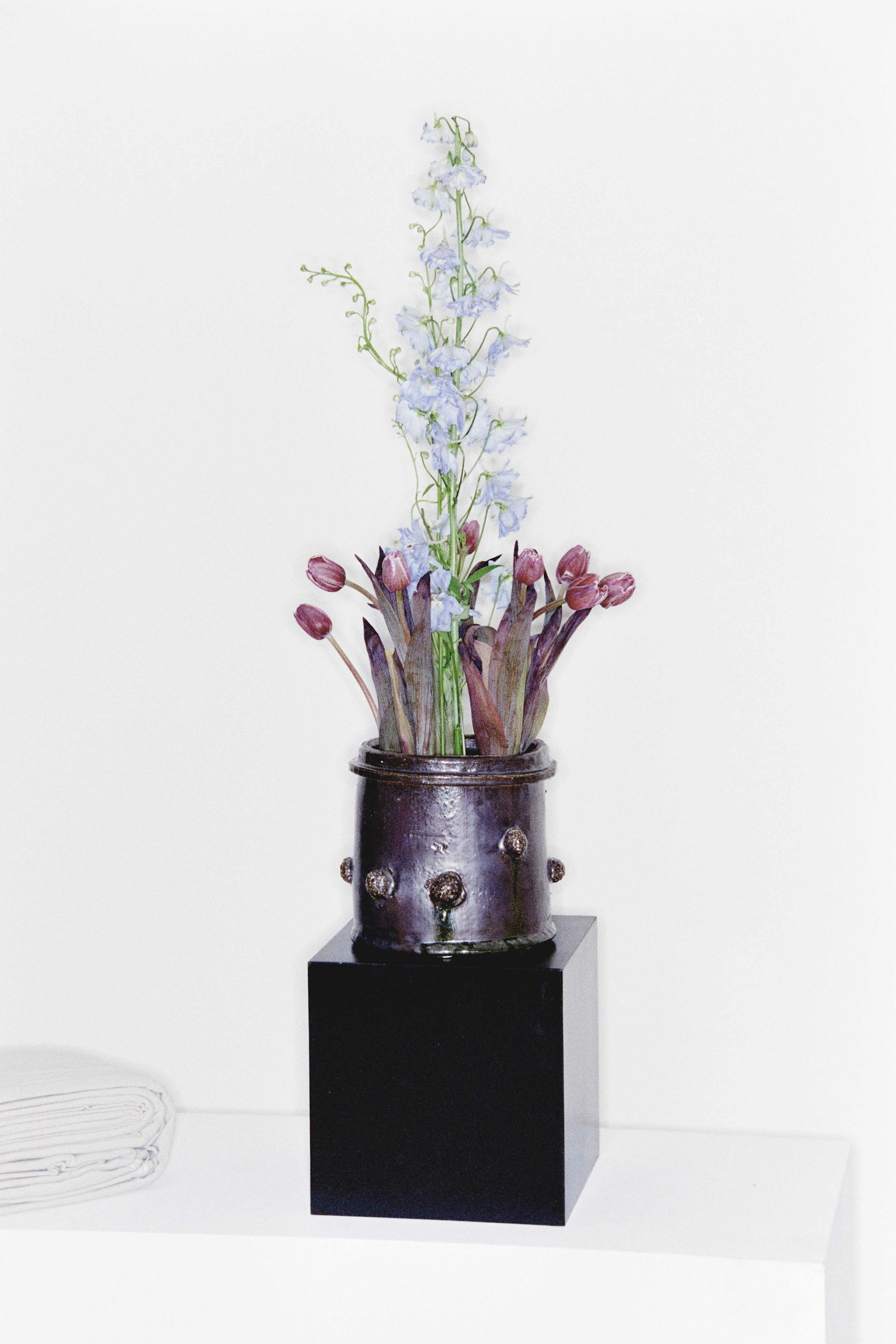 Link
Link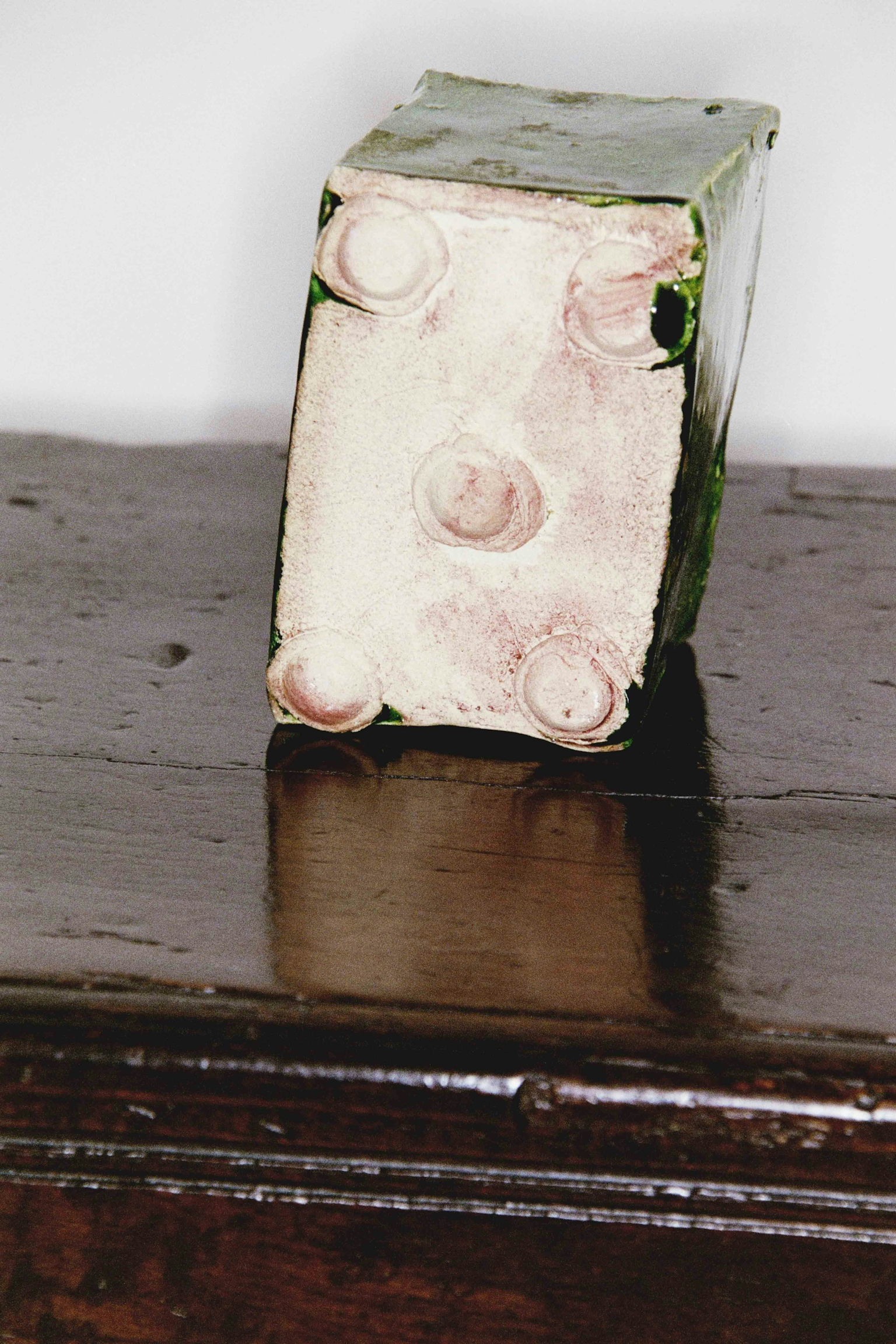 Link
LinkEB: Could you talk a little bit about your time at Alfred where you received your masters degree? Does that time still resonate with you?
At the time, the grad program had the reputation of breaking people down and building them back up. I definitely felt that way. I was built back up, but I wasn't fully aware of how I was put back together. I left there intensely focused on pursuing a teaching career. At that time, I felt like teaching was more important than making.
Anne Currier, who taught there at the time, encouraged me to think a bit broader, maybe pushing to apply my sensibility outside the realm of functional pottery. I feel like she saw that I was limiting myself in a way that I wasn't really even aware of yet. It took me years to figure out what she was getting at – looking back, it was an important moment.
EB: How do you engage with histories in your work?
JM: I'm not a big reader, but I can catalog images really well. I have a big appetite for art books and other image-centric publications. I liken it to a process of foraging. When something visually catches my eye, when it feels plump or juicy, I collect it.
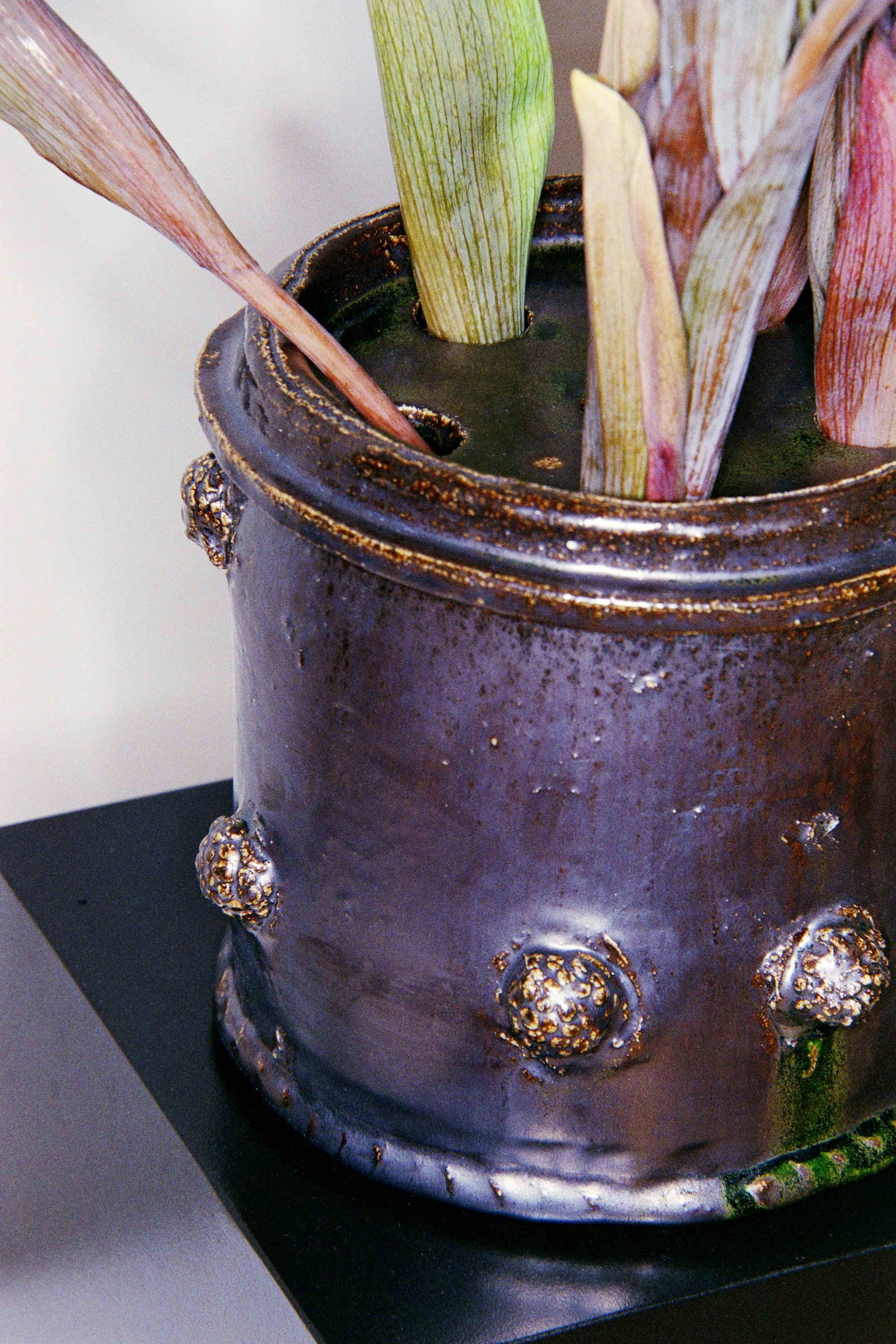 Link
LinkEB: I love the metaphor of foraging. Is it improvisational or do you have a game plan?
JM: To mix metaphors, it's like having a song stuck in your head. I had this opportunity for Jacqueline's gallery and at that moment there was this one "tune" of these historic fireplaces that I was looking at and thinking about. It's just this kind of internal rhythm that gets set by something that I've seen or read, always driven by curiosity.
EB: All the more means to celebrate your ability to catalog images well, to pull them when need be.
JM: It came in handy when I was teaching. It was easy for me to recall stuff.
EB: I was struck when you were writing about how your deep serving vessels were inspired by text descriptions rather than “foraged” images. I view it as a really nice act of translation.
JM: That was back in graduate school. I made that discovery when listening to a lecture by Alberto Manguel. There's a book of his called The History of Reading where he describes what happens in the mind when one is reading a book, which is an act of world forming. It's your relationship with the words that make the textures and add the fine details of how the story unfolds. For me, making these vessels started by going through the list of illustrations at the back of a pottery book, and the text descriptions of the pots formed a completely different picture in my head of what the objects actually look like.
EB: It makes me think about what gets lost in that effort of translation and what is gained when it materializes in clay.
JM: Just a few minutes ago, I was talking about the couch I just bought and you might have a completely different idea of what this couch looks like based on your relationship to furniture. So by reading something, like a description of an object, the image in your minds-eye is actually self-generated. It's someone else's words, but the image is based on your own experiences and knowledge. So the result is actually quite personal. There’s a kind of tension between these two things, something external that exists and something personal that you’re creating.
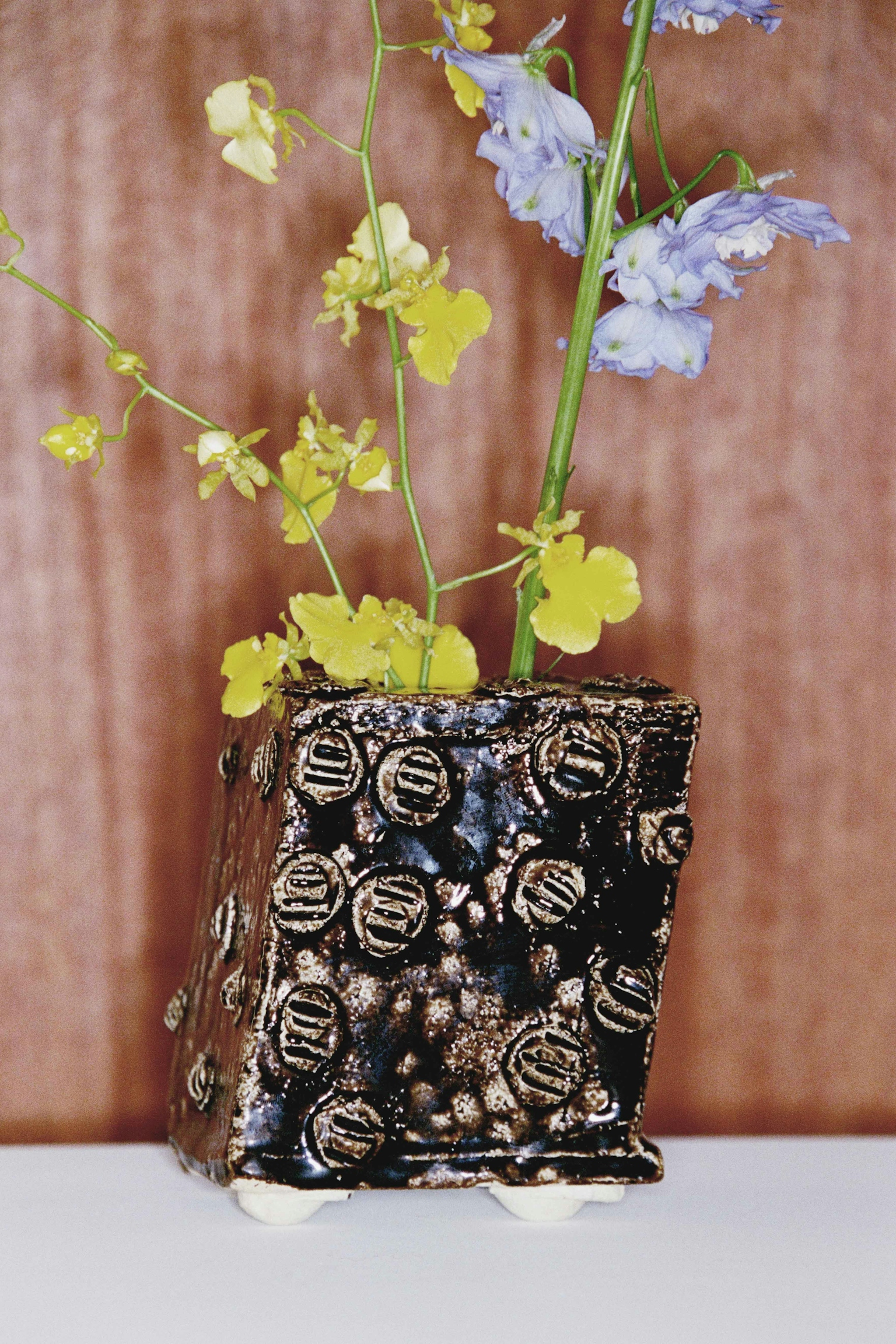 Link
LinkEB: To what degree is your practice rooted in research?
JM: Research sounds too formal for what I do. The work I've made for the gallery is based on past research into the history of industrial ceramic production, the way things were made in factories and the way things are made in other environments, where there’s many people forming one object.
EB: How did this interest in industrial-scaled ceramic production influence your work for the gallery?
JM: I was interested in this idea of a “flower brick,” a term that has a weird sandwiching of something soft and delicate with something dumb and heavy. I was also looking at these fireplaces that were formed from bricks, which had these rich lead glazes.
The processes that I'm using now in the studio involve tools that would have been used in a more industrial setting from the past. I’m using extruders, molds and things like that. So it was the tools and the processes that set up these parameters of using circle and square forms. Basically, I would fill a table with these basic shapes from the extruder, and then cut them up.
One of my favorite potters is Rosanjin. He hired some of the best craftspeople to make the basic forms and shapes he wanted, and then he would barge into the studio and whack something with a stick or cut something in half. I always loved this image and I constantly try to set up that type of scenario in my studio. I use these machines to make parts that have an element of precision, then there’s me, this klutz, who cuts up and man-handles the parts into vases.
EB:There must still be an attention to form, color and design as it relates to your own formal language?
JM: I think that the older I'm getting, the less conscious those decisions become. I’m relying on my own intuition, my ongoing catalog of images, motifs and glazes and stuff like that. I just want to have more fun making the work. But for this series, I was riffing off of the historical lead glazes.
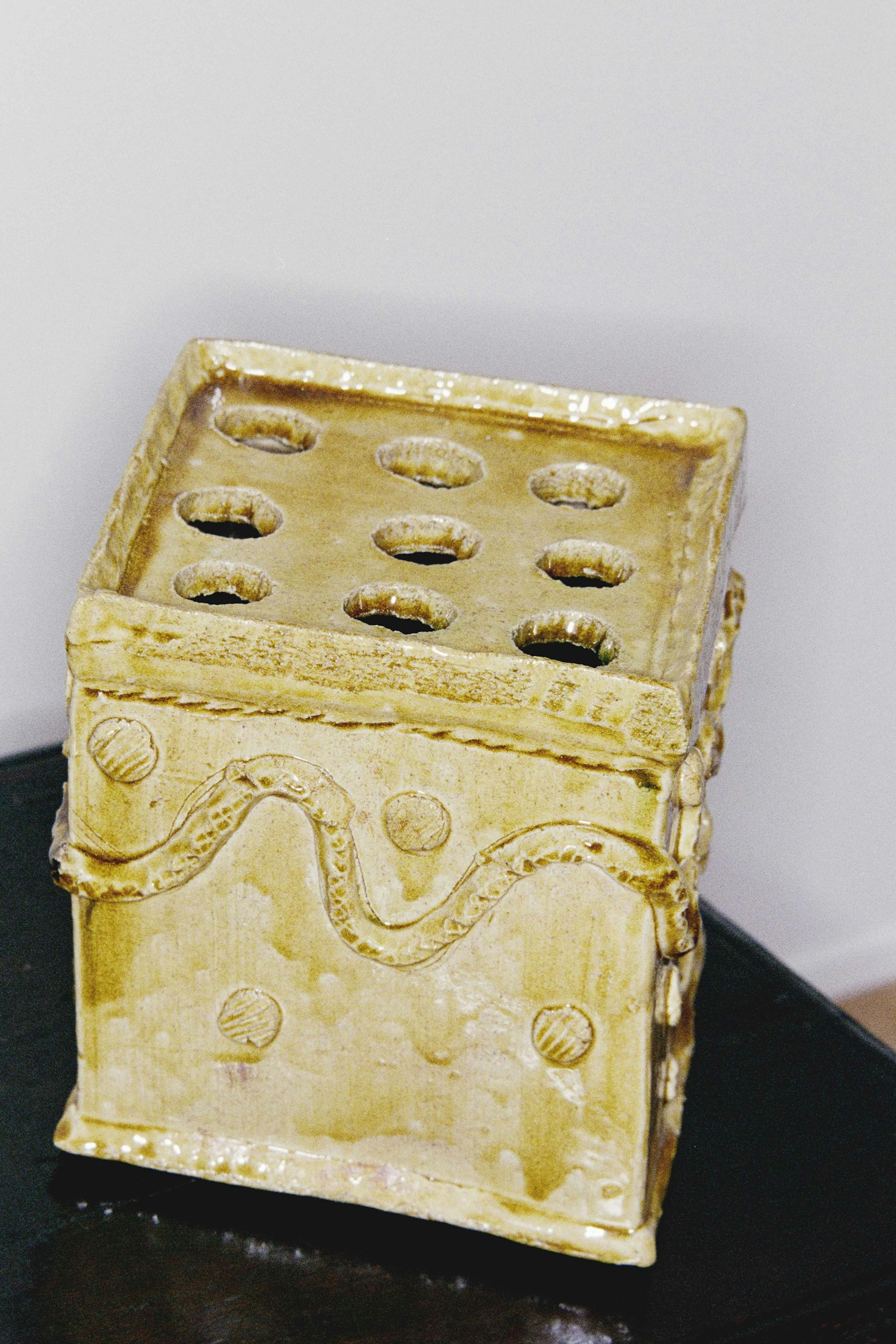 Link
LinkEB: Does this spirit of finding joy in your process continue once the piece is completed, be it in an exhibition context or in someone's house?
JM: I have this relationship with the objects in the studio while I'm working on them. But I also really enjoy packing them up and letting them go. If I’m around them too long I start picking them apart. I'd rather have some detachment once they're done.
A lot of the time people may pick up on things in the work, especially if they know the references that I'm working with. But I also try to have some ambiguity in the work. I think that can encourage, or give someone the space, to make their own story. I think ambiguity can draw people in.
EB: I was reading in another interview about your thoughts on the idea of a malleable practice. What does it mean for you to work in a malleable way?
JM: This goes back to what Ann Currier was sharing with me that I didn't really quite get when I was in graduate school. She sensed this unwillingness that I had to use something other than a potter's wheel to make the form. Now I'm willing and able to make door pulls and lights, which are commissioned things that I used to sheepishly turn down. For me, being malleable is the ability to bend and change and not crack.
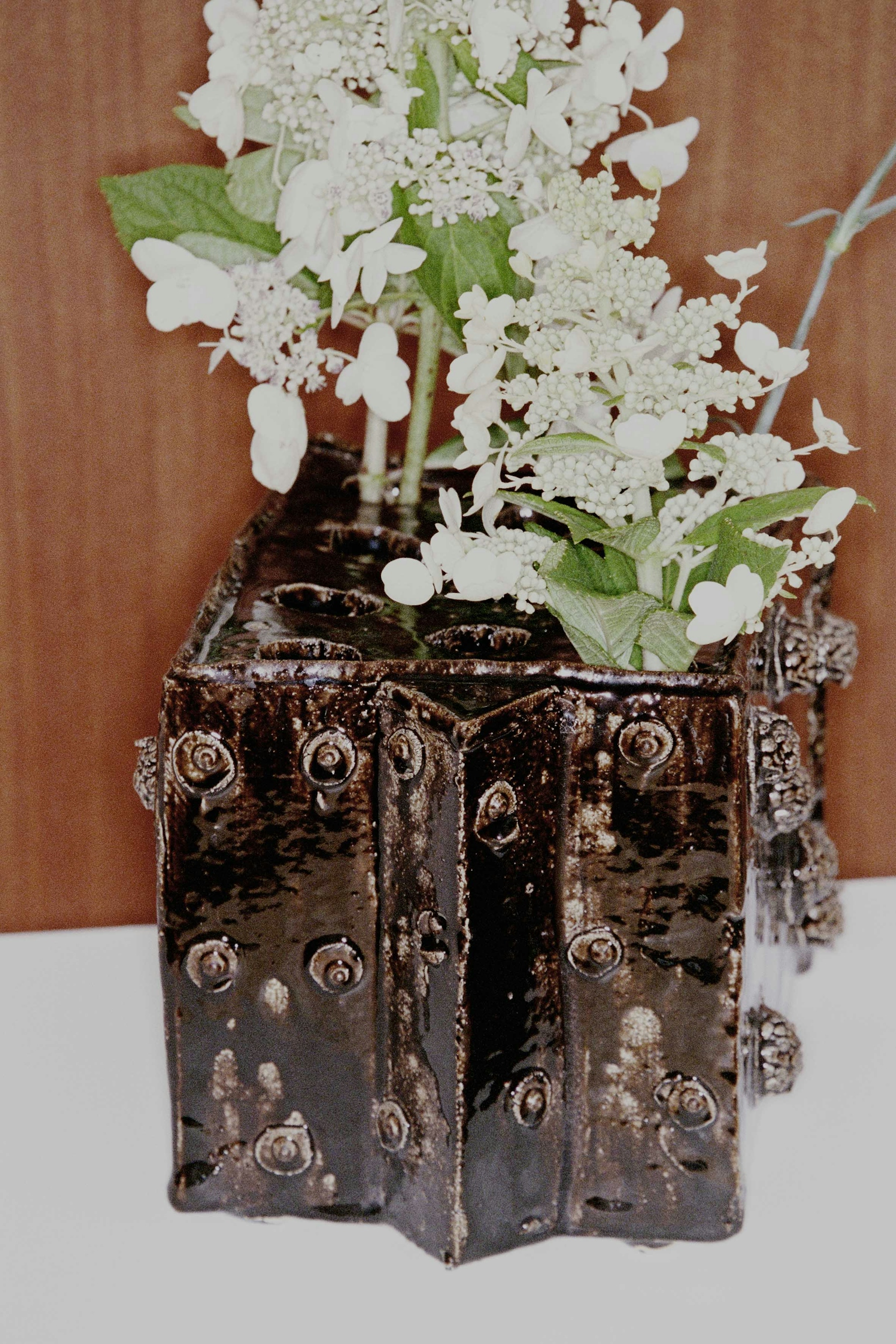 Link
LinkJM: Is there any other specific language that comes up for you that feels vital for your work?
EB: I always try to have a sense of humor. And also a bit of an oblique approach. Even in the most straightforward things I make, I try not to have any direct references to their influences. For example, with a series of striped vases, I was referencing a really cool Dutch vase with blue and yellow stripes. I took the colors and pattern and changed the orientation and scale of the stripes. For me, this can result in someone possibly getting the reference, but also not quite being so sure.
EB: What feels important to you as a designer and human right now?
JM: Empathy. Especially right now as a parent, as a businessperson. It's not my nature to make work that's overtly political, but I try to always remember that we’re all vulnerable people. As I move through life and business, this feels more important now than ever.
